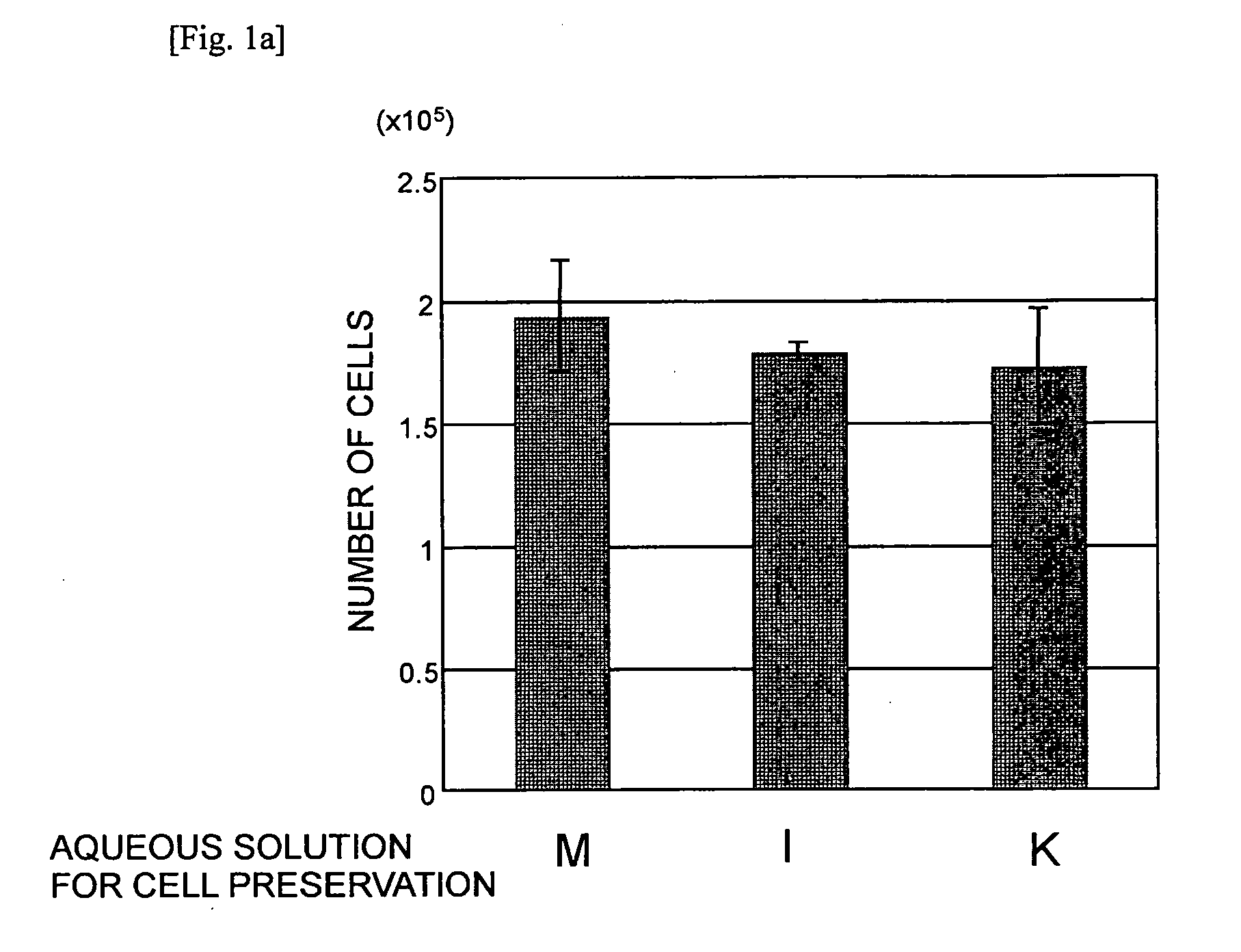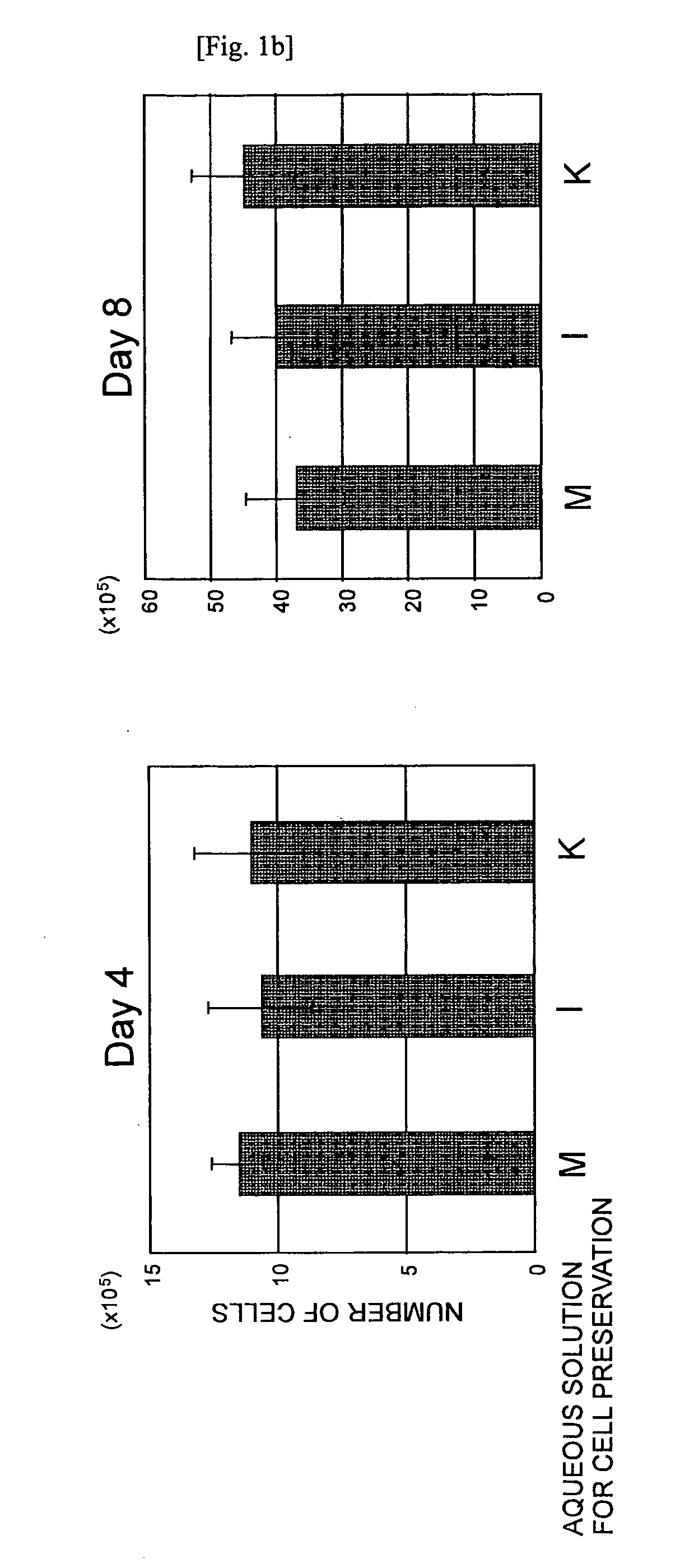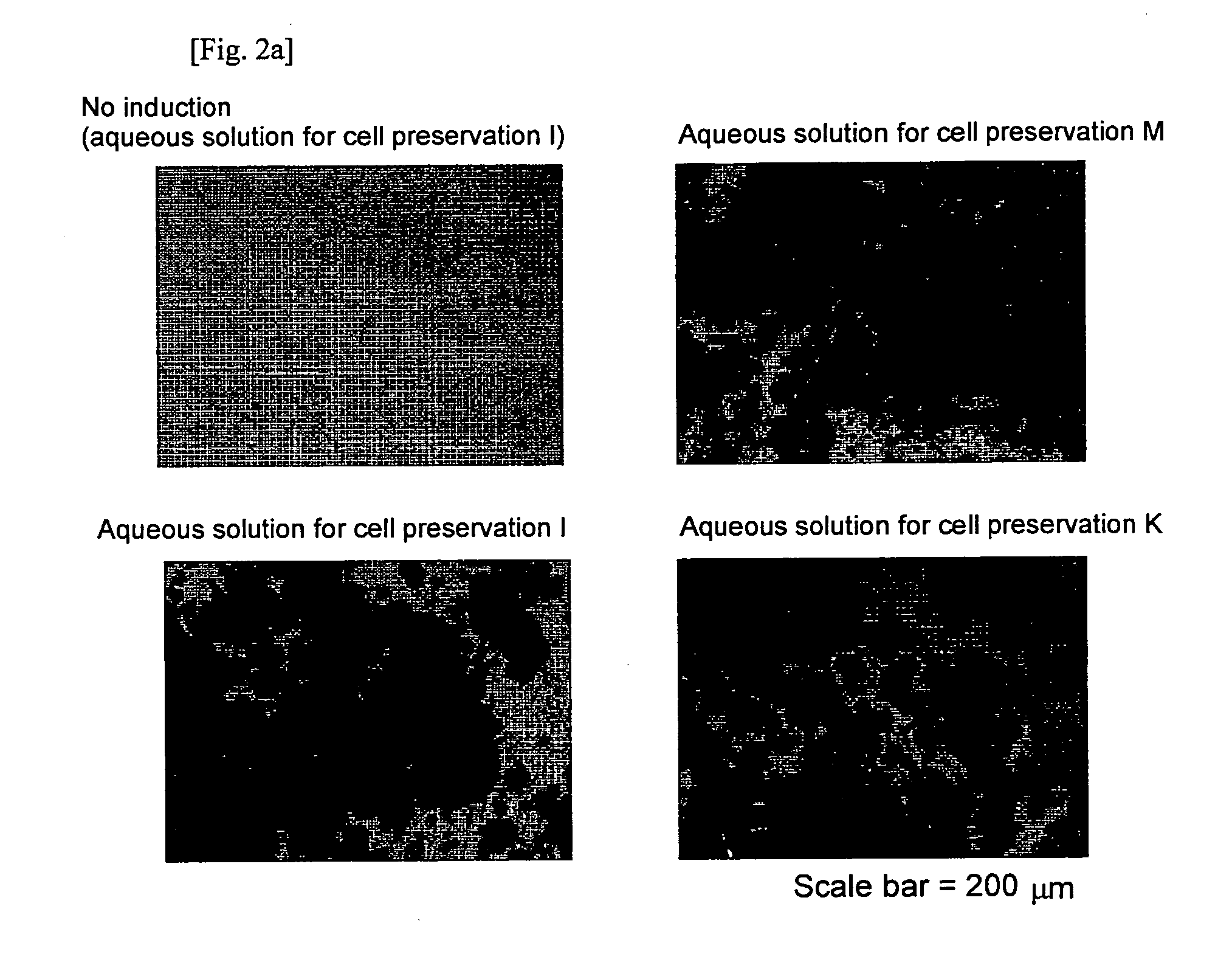Aqueous Solution for Cell Preservation
a cell and solution technology, applied in the field of cell preservation, can solve the problems of unobtainable cell preservation solution that is totally free of natural animal-derived components, and the influence of cells remains, so as to achieve safe use for medical applications, retain cell proliferation potential and differentiation ability, and high cell survival rate
- Summary
- Abstract
- Description
- Claims
- Application Information
AI Technical Summary
Benefits of technology
Problems solved by technology
Method used
Image
Examples
example 1
[0064]
[0065]1. Preparation of each Component
[0066]The respective components of an aqueous solution for cell preservation were prepared as described below:
[0067](1) Thickener
[0068]a. CMC
[0069]CMC was prepared in a total volume of 750 mL by dissolving 5 g of carboxymethylcellulose (manufactured by Wako Pure Chemical Industries, Ltd.) in distilled water at high temperature or at normal temperature
[0070]b. CMC-Na
[0071]CMC-Na was prepared in a total volume of 750 mL by dissolving 5 g of sodium carboxymethylcellulose (manufactured by Wako Pure Chemical Industries, Ltd.) in distilled water at high temperature or at normal temperature.
[0072]c. Sodium Polyacrylate
[0073]Sodium polyacrylate was prepared in a total volume of 750 mL by dissolving 5 g of sodium polyacrylate (manufactured by Wako Pure Chemical Industries, Ltd.) in distilled water.
[0074](2) Cryoprotectant
[0075]d. Dimethyl Sulfoxide (DMSO)
[0076]One hundred mL of dimethyl sulfoxide (manufactured by Wako Pure Chemical Industries, Ltd....
example 2
[0097]
[0098]Cells described in Table 3, which had been harvested and fractionated beforehand from an RPMI1640 culture medium added with 10-v / v % FBS, were collected by centrifugation and added with either 1 mL of the aqueous solution for cell preservation J or the comparative aqueous solution for cell preservation M so that the cells were suspended in the solution at 5×105 to 5×106 cells / mL, followed by dispensing the suspension into 2-mL-volume cryotubes (manufactured by Nunc Co., Ltd.). Immediately after that, the cryotubes were rapid-frozen at −80° C. and then preserved for a certain period of time. The survival rates of cells after the respective preservation periods in case of lymphocytes are shown in Table 3, the survival rates of cells after the respective preservation periods in case of spleen cells are shown in Table 4, and the survival rates of cells after the respective preservation periods in case of thymocytes are shown in Table 5.
TABLE 3PreservationperiodSurvival rate ...
example 3
[0100]
[0101]Cell preservation solutions C and N to R were prepared using the respective components prepared in 1. of Example 1 described above so that their compositions described in Table 6 could be obtained. In addition, in a manner similar to Example 1 described above, the performance test and specification test of each aqueous solution for cell preservation were carried out, by using X63Ag8-6.5.3. cells. The results of the tests were shown in Table 6.
[0102]As shown in Table 6, the aqueous preservation solutions containing 2 w / v % or less or 7 w / v % of glucose each showed a low survival rate. In contrast, the aqueous preservation solutions each containing at least 3 to 5 w / v % of glucose each showed a survival rate of 80% or more.
TABLE 6Aqueous solution for cell preservation (g / L)ComponentsNOCPQRThickenerCMC—Na5CryoprotectantDMSO100Sugars,Phosphate buffer1.576pH adjustersBSSGlucose102030405070Sodium bicarbonate0.8HEPES0.36WaterDistilled waterAdequate amountPerformance testSurviva...
PUM
| Property | Measurement | Unit |
|---|---|---|
| pH | aaaaa | aaaaa |
| volume | aaaaa | aaaaa |
| total volume | aaaaa | aaaaa |
Abstract
Description
Claims
Application Information
 Login to View More
Login to View More - R&D
- Intellectual Property
- Life Sciences
- Materials
- Tech Scout
- Unparalleled Data Quality
- Higher Quality Content
- 60% Fewer Hallucinations
Browse by: Latest US Patents, China's latest patents, Technical Efficacy Thesaurus, Application Domain, Technology Topic, Popular Technical Reports.
© 2025 PatSnap. All rights reserved.Legal|Privacy policy|Modern Slavery Act Transparency Statement|Sitemap|About US| Contact US: help@patsnap.com



